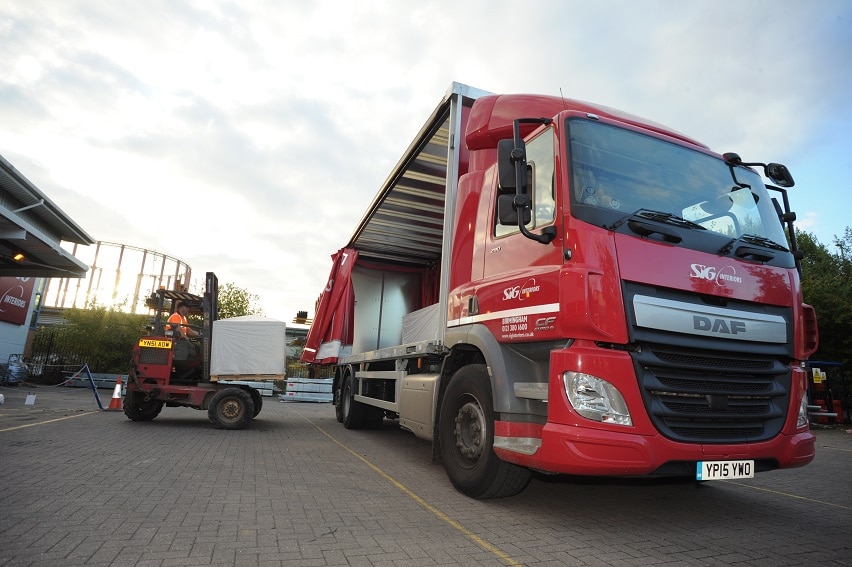How the construction supply chain tackles the movement of men, materials and machines to ensure that productivity is maintained is critical. Steve Menary reports.
“If Waitrose or Ocado can tell you within 15 minutes of when a delivery will come, why can’t that happen on major construction projects? Instead, we’ve got lorries waiting five hours to unload in central London,” sighed Peter Jacobs, managing director of the construction and integrated solutions business at logistics consultant Wilson James.
“We need to work out who bears the real cost of 20 lorries waiting outside a site and the drywall guys not being able to work because their screws are stuck on a truck outside,” he added.
That will be a familiar scenario for any specialist contractor working on tight central London sites. Mr Jacobs is speaking from experience. Before joining Wilson James he worked for major blue chip contractors such as Lend Lease on high profile jobs including the athletes’ village for the 2012 London Olympics. As the economy slowly improves, commercial work in London is expected to increase and with that more site congestion and disruption. But there is an alternative – out-of-hours deliveries.
Mr Jacobs, now working for Wilson James on the Richard Rogers designed 22 Bishopsgate project in central London with Brookfield Multiplex, added: “There is a delicate balance between congestion and disruption, and the problems they cause for the local community, and out-of-hours deliveries. If you have quiet deliveries, you can convince the environmental health authorities.
“There are places like airports and city centres where you can create far less disruption by delivering out of peak hours. You have to do it on a case-by-case basis and talk to local authorities.”
For some specialist contractors, the notion of paying staff extra money for booking in deliveries during evenings or weekends would seem unpalatable. But what Mr Jacobs is arguing for is not a plethora of deliveries, but consolidation.
He continued: “What can be done now is that rather than every specialist trade in a fit-out having their own supplier delivering individually to a congested site, you have a delivery point outside the congestion zone, where everything is delivered and then taken with a single delivery to site.”
Trade body FIS is a big advocate of new methods. “We live in a 24-hour society and construction has to join that,” said membership manager Robert Barker. But some specialist contractors are sceptical about consolidating orders.
Angela Mansell, operations director at Mansell Finishes, highlighted: “We use distributors such as CCF and SIG for just-in-time deliveries. What is the sense in double handling it?”
Tools and fixings giant Hilti is pushing hard to get customers to buy online and hopes that 50 per cent of all orders will be procured in that fashion by 2020, but Kris Levey, the company’s head of brand and communication, is not convinced by consolidation.
He said: “It would be great for the end user but complicated at the front end. It could be beneficial in central London but if it’s just an office fit-out then it could add complexity for the drywall guys.”
However, plans are afoot to start moving the industry in this direction. This summer, the UK innovation agency Innovate UK awarded Skanska a grant towards a £1 million project to ‘tag and track’ different aspects of a project. The programme will run for two years and capture data from multiple supply chain partners. Ian Brixey, Skanska’s project lead, commented: “The outcome of the project has the potential to have a big impact. By using the latest digital techniques, we intend to get to a stage where the ‘marking’ of project components in the form of Radio Frequency Identification tags/barcodes facilitates real-time monitoring of the manufacturing process, delivery to site, storage and installation.
“Once in place, the tagged components will remain for the life-cycle of the project, providing accurate information to those that need it. This level of information allows progress on projects to be monitored against plans and timescales.”
Skanska is working with BRE, Multiple Access Communications and Leaderflush Shapland to develop the research and has received £200,000 towards its £400,000 project costs from Innovate UK.
The overall project will cost £1 million and the research will be piloted on supply chain partners in all sectors, including interiors, to accelerate uptake of building information modelling (BIM).
FIS started a BIM group called BIM4FitOut 24 months ago, and for Mr Jacobs, embracing BIM and the online world has to be the future. He concluded: “The front end is going online. Everything is going on to BIM. Construction information will go online and we will have consolidated buying. More and more people are doing it because it’s just got to come.”


